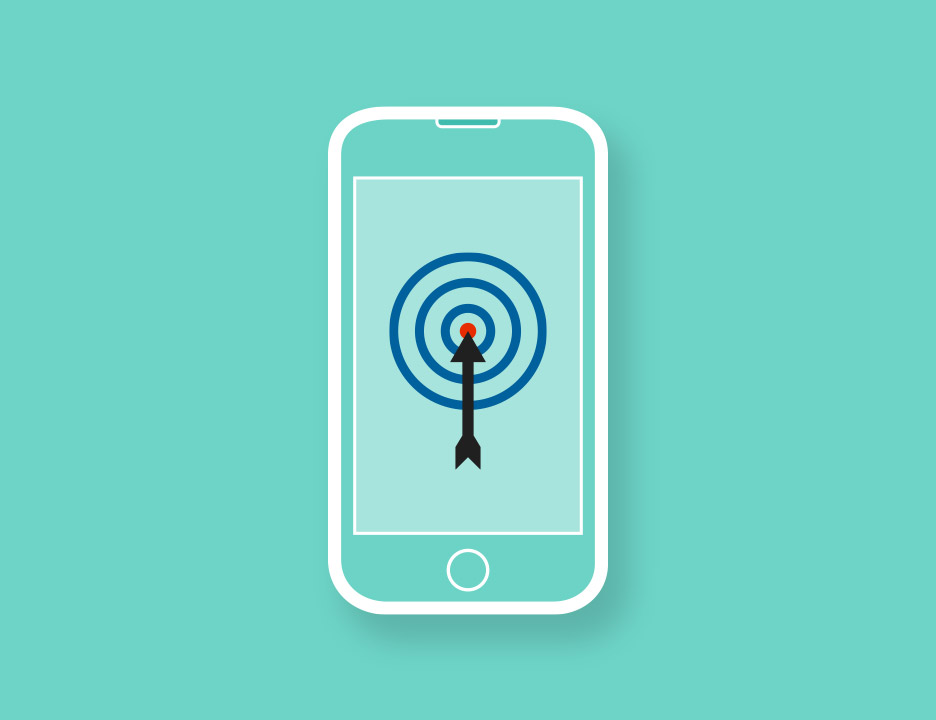
When you learn that 80% of internet users own a smartphone and how mobile devices are used for over 40% of online transactions and that 80% of shoppers use smartphones during physical shopping, the question shifts from “Should I develop a mobile marketing strategy?” to “How should I develop my mobile marketing strategy?”
Creating a mobile marketing strategy is a lot like creating any other marketing strategy. The main difference is mobile strategies require more focused and specific thinking. Given the wide range of endpoints available, you can really zero in on not only who your audience is, but what they’re doing. Think about it: the message you want to share with a group on, say, ESPN.com could be presented much differently than the message you want to share with a group while they’re browsing on their LinkedIn app.
First, set goals. Be specific. Goals like “I want to be rich!” won’t help you because it doesn’t direct you to real, actionable results. But goals like “Increase software downloads by 20% over last year” or “Double weeknight reservations” give you something to shoot for. And while ambition is an admirable trait, be realistic, too. “Increase product purchases twenty-fold over last week” is indeed something to shoot for, but are you really going to achieve it?
Next, you’ll want to determine your audience. Decide on who you want to talk to, what they do, how much they earn, their interests, and so on. With this info, you’ll create personas. Personas are composite sketches of segments of your audience. They’re fictional characters who represent the types of people you will market to. Personas put a face on what might otherwise be an amorphous group of people and they help when you start to develop specific communications. It’s so much easier to address Brenda, a 32-year-old manager of product development for a large software company who earns $85k a year than it is to address professional females, 30-40, HHI $75k-$100k.
Now that you’ve created your personas, it’s time to decide on where you’ll want to place your ads or send your message. You’ll notice we haven’t started work on creative yet. This is where a mobile marketing strategy differs from a conventional marketing strategy. With traditional marketing, we look to magazines, radio, TV, or billboards. But with mobile marketing, there are so many more opportunities. Whether it’s enlisting the help of an Instagram influencer or promoting Facebook posts, there are a wide variety of options beyond the typical banner ad. And even banner ads can be found in places where they haven’t been before. It’s not uncommon to find ads in popular mobile games and apps. Everywhere the mobile user goes on their phone, your message can certainly follow.
You’ll notice we talked about placement before developing creative. Since your ads may go into some very niche spots, creative can (and arguably should) be crafted to fit both the audience and the placement. For example, a pizza restaurant could position themselves as “the official food of halftime” when communicating on sports sites or apps, while boasting of being “the official food of movie night” on an entertainment site or app. It’s fine to develop creative while placements are being made, but once specific buys are in place, make sure the creative works within them.
We know our audience, we know where they visit, we’ve developed creative that factors in both the audience and the placement, let’s get this party started, right?
Not so fast. Before you pull the trigger on your ads, you’ll want your destinations to be in good shape. First and foremost, is your site optimized for mobile users? There’s no use in developing a mobile marketing strategy if you’re not ready for mobile traffic.
Second, have you created custom landing pages for your mobile traffic? While not a requirement, a consistent message, look and feel between your mobile communications and your site is a great opportunity to develop trust and reduce the risk of confusion. If your ads promise you’re the official food of halftime, your landing page should certainly follow that message.
As much as we’d like to say this is when you sit back, relax, and count the money as it rolls in, we can’t. Because this is the point when you monitor the progress of your efforts to see if you’re reaching your goals. What creative is working the best for you? When are you seeing peak traffic to your site? Are there platforms that aren’t performing as well as you’d like?
Google Analytics is a great way to track activity on your site. Used with Google Tag Manager, you can differentiate your source traffic to determine which placements are your greatest drivers.
And there are other resources for data. Both Facebook and Twitter provide comprehensive analytics for your business. Ad servers like DoubleClick, OpenX, and AdZerk offer reporting to help you gauge your hits and misses, allowing you to optimize your ads and improve ad performance.
Here at Boxcar, we’re developing an attribution tool called Adolytics to help our clients determine who gets credit for a conversion. So if you’re interested in seeing the customer’s journey from introduction to sale, we’ve got that story. (If you’d like to learn more, contact us and we’ll give you a tour of Adolytics.)
Creating a mobile marketing strategy isn’t difficult, it just requires an attention to details and persistent monitoring. But with a little hard work and a lot of focus, you can succeed in the mobile space.
Need a little help with your mobile marketing strategy? Give us a shout! We’d love to partner with you.